M1CDQ
Member
- Messages
- 207
just a follow on from this thread.
eye protection for all jobs is important.
do you want to go looking from this to this

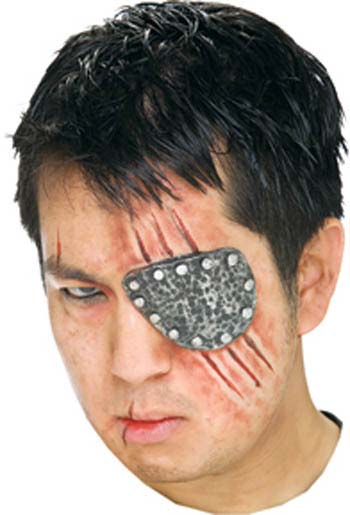
some people think "I look daft in them" well I would rather look daft in them.Than a total idiot down at A&E with an eye like this

most tool shops do eye protection and screwfix do a nice range
So you can look cool as well as being safe at the same time.
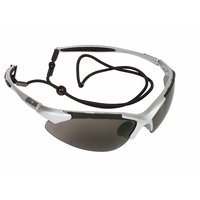
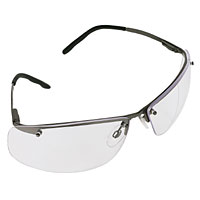
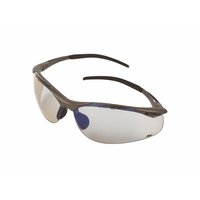
all safety glasses in the UK should carry a standard marking on the side arm and often on the lens is self. the minimum it should be is EN166F
it will look something like this image fullsize
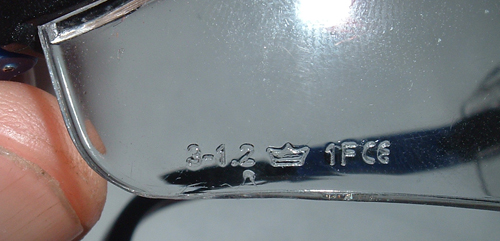
Some Info taken from some HSE stuff I have
--------------------------------------------------------------------
Eye Protection This provides protection against impact, chemical or molten metal splashes, dust, or radiation from welding arcs or lasers. It may take the form of spectacles, goggles, visors, face shields or hoods.
a) Standards
The current standard for safety spectacles, goggles, and face shields is EN 166. The standard has different sub-classes, listed below, so the description may be complex (e.g. a gas safety goggle conforms to BS EN 166.1.B.3.5.9).
i) 1 or 2 describes the optical class
ii) 3 protects against liquid droplets/splashes
iii) 4 protects against large dust particles
iv) 5 protects against gas and fine dust particles
v) 9 protects against molten metals and hot solids
vi) B protects against medium energy impact
vii) F protects against low energy impact
Other relevant standards are as follows
i) EN169 welding filters
ii) EN170 ultra violet filters
iii) EN172 sun (glare) filters
iv) EN175 welding eye protectors
v) EN1731 mesh eye protectors.
b) Selection
Always choose eye protection appropriate to the hazard and ensure that it fits properly and is comfortable.
i) Safety spectacles normally incorporate sideshields and are suitable for general workshop or laboratory use when protection against impact or occasional light chemical splash is required. They may be fitted with prescription lenses: where these are required at work, then the cost of an eye test and the cost of the spectacles must be borne by the department.
Eyeshields (overspecs) are similar to safety spectacles, but they may be worn over ordinary prescription spectacles. They are particularly suitable for occasional use; either by visitors, or by spectacle wearers (so avoiding the expense of prescription safety glasses), but their optical quality is generally not good enough for prolonged use.
Although safety spectacles are commonly worn in laboratories and their use is strongly encouraged, they are not sealed to the face and so are not appropriate where there is a serious risk of eye injury from toxic or corrosive chemicals or from cryogens (e.g. where large volumes may be splashed onto the head and run down into the eyes).
ii) Goggles provide total protection to the eyes, though they are heavier and less convenient than safety spectacles. They may be worn over prescription spectacles. Unvented goggles offer far better protection than safety spectacles where there is a serious danger of chemical splash, but may be prone to misting up. Double glazing or treated lenses alleviate this; directly or indirectly ventilated goggles are also available. However, directly ventilated goggles do not give good protection against ingress of chemicals, gases, and dust; indirectly ventilated goggles give protection against liquid ingress, but do not prevent entry of gases or vapours.
iii) Face shields protect the whole face as well as the eyes, but do not fully enclose the eyes, so do not give protection against dusts and gases. They are comfortable to wear, not prone to misting and may be used with ordinary spectacles.
c) Maintenance
Dirty lenses impair vision, causing eye fatigue and leading to accidents. The plastic lenses of eye protectors should be wet cleaned to avoid scratching; scratched lenses should be replaced, as should face shields if they become crazed or brittle with age.
-------------------------------------------------------------------
If your PPE does not have these standard marking on them dont use them
they could be cheap fakes. go and get some they are cheap enough.
also if you like me are teaching your kids how to use tools correctly get them some as well the fill correctly have a look here for PPE for Kids
PPE FOR KIDS
http://www.chesterford.co.uk/acatalog/Children_s_Safety_goggles___safety_glasses.html
-----------------------------------------------------------------
if I am grinding I tend to wear goggles instead of glasses as it stops a lot of dust getting in the eyes from around the side of the glasses
And for the people who wear normal glasses you can get over glasses to go over your normal glasses which are worth getting or just a visor
1 Some normal glasses wont protect you from an impact and they could shatter
2 They could get damaged from sparks and tye explaining to SWMBO thay you need new glasses it would be a case of you should have gon to specsaves you should have gone to screwfix
eye protection for all jobs is important.
do you want to go looking from this to this

some people think "I look daft in them" well I would rather look daft in them.Than a total idiot down at A&E with an eye like this

most tool shops do eye protection and screwfix do a nice range
So you can look cool as well as being safe at the same time.



all safety glasses in the UK should carry a standard marking on the side arm and often on the lens is self. the minimum it should be is EN166F
it will look something like this image fullsize

Some Info taken from some HSE stuff I have
--------------------------------------------------------------------
Eye Protection This provides protection against impact, chemical or molten metal splashes, dust, or radiation from welding arcs or lasers. It may take the form of spectacles, goggles, visors, face shields or hoods.
a) Standards
The current standard for safety spectacles, goggles, and face shields is EN 166. The standard has different sub-classes, listed below, so the description may be complex (e.g. a gas safety goggle conforms to BS EN 166.1.B.3.5.9).
i) 1 or 2 describes the optical class
ii) 3 protects against liquid droplets/splashes
iii) 4 protects against large dust particles
iv) 5 protects against gas and fine dust particles
v) 9 protects against molten metals and hot solids
vi) B protects against medium energy impact
vii) F protects against low energy impact
Other relevant standards are as follows
i) EN169 welding filters
ii) EN170 ultra violet filters
iii) EN172 sun (glare) filters
iv) EN175 welding eye protectors
v) EN1731 mesh eye protectors.
b) Selection
Always choose eye protection appropriate to the hazard and ensure that it fits properly and is comfortable.
i) Safety spectacles normally incorporate sideshields and are suitable for general workshop or laboratory use when protection against impact or occasional light chemical splash is required. They may be fitted with prescription lenses: where these are required at work, then the cost of an eye test and the cost of the spectacles must be borne by the department.
Eyeshields (overspecs) are similar to safety spectacles, but they may be worn over ordinary prescription spectacles. They are particularly suitable for occasional use; either by visitors, or by spectacle wearers (so avoiding the expense of prescription safety glasses), but their optical quality is generally not good enough for prolonged use.
Although safety spectacles are commonly worn in laboratories and their use is strongly encouraged, they are not sealed to the face and so are not appropriate where there is a serious risk of eye injury from toxic or corrosive chemicals or from cryogens (e.g. where large volumes may be splashed onto the head and run down into the eyes).
ii) Goggles provide total protection to the eyes, though they are heavier and less convenient than safety spectacles. They may be worn over prescription spectacles. Unvented goggles offer far better protection than safety spectacles where there is a serious danger of chemical splash, but may be prone to misting up. Double glazing or treated lenses alleviate this; directly or indirectly ventilated goggles are also available. However, directly ventilated goggles do not give good protection against ingress of chemicals, gases, and dust; indirectly ventilated goggles give protection against liquid ingress, but do not prevent entry of gases or vapours.
iii) Face shields protect the whole face as well as the eyes, but do not fully enclose the eyes, so do not give protection against dusts and gases. They are comfortable to wear, not prone to misting and may be used with ordinary spectacles.
c) Maintenance
Dirty lenses impair vision, causing eye fatigue and leading to accidents. The plastic lenses of eye protectors should be wet cleaned to avoid scratching; scratched lenses should be replaced, as should face shields if they become crazed or brittle with age.
-------------------------------------------------------------------
If your PPE does not have these standard marking on them dont use them
they could be cheap fakes. go and get some they are cheap enough.
also if you like me are teaching your kids how to use tools correctly get them some as well the fill correctly have a look here for PPE for Kids
PPE FOR KIDS
http://www.chesterford.co.uk/acatalog/Children_s_Safety_goggles___safety_glasses.html
-----------------------------------------------------------------
if I am grinding I tend to wear goggles instead of glasses as it stops a lot of dust getting in the eyes from around the side of the glasses
And for the people who wear normal glasses you can get over glasses to go over your normal glasses which are worth getting or just a visor
1 Some normal glasses wont protect you from an impact and they could shatter
2 They could get damaged from sparks and tye explaining to SWMBO thay you need new glasses it would be a case of you should have gon to specsaves you should have gone to screwfix




 vision Xpress wanted £420 for a pair of prescription ones for me from Uvex, mind they are varifocals so maybe that made a difference....the job went ape when I told them.....and I am the h&s man too.....
vision Xpress wanted £420 for a pair of prescription ones for me from Uvex, mind they are varifocals so maybe that made a difference....the job went ape when I told them.....and I am the h&s man too.....
